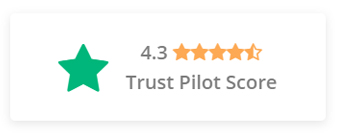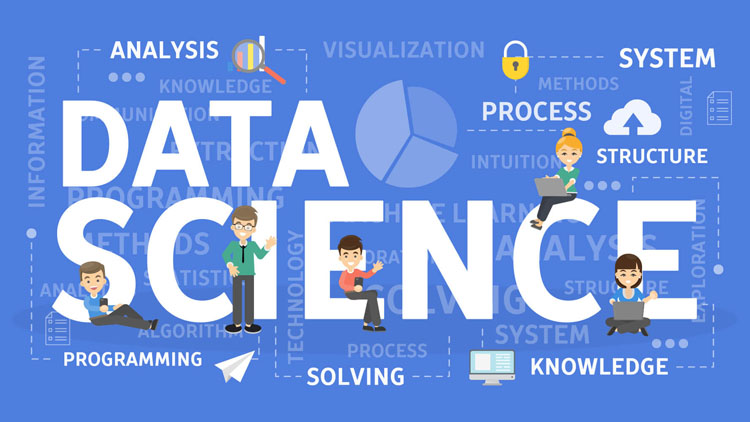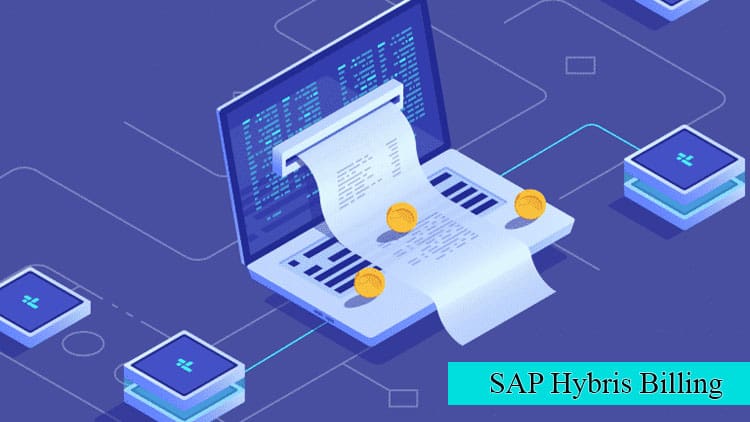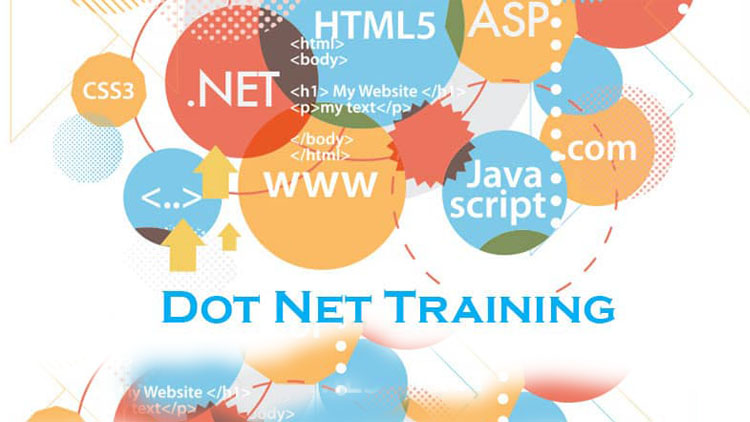Key Features of Data Science online training
This Data Science training will prepare the students to handle the multidisciplinary field and be ready for the industry.
Data Science Online Training
Flexible Program Delivery
Complete Online Assistance
Self Paced Learning Option Available
Trending Courses
Better Course Fee
Structure than Market.
Why choose us
Self-paced Videos
- Learn Your Favourite Skill In Your Spare Time
- Gain Practical Training With High Quality Recorded Videos Taught By Industry Experts.
- Watch Complex Topics As Many Times As Possible.
- Gain Industry-Oriented Skills.
- Solve Your Doubts With Real-Time Expert Trainers.
Live Online Training
- Choose The Time That Suits You.
- Attend A Demo Before Joining A Course
- Solve Your Doubts In Real-Time
- Interact With The Trainer And Share Your Views
- Get Access To Google Drive To Revise The Topics.
- Get The Guidance To Clear The Certification Exam
Corporate Training
- Train Your Workforce With The Latest Skills.
- Customize The Course Content To Match Your Requirements.
- Provide The Required Knowledge To Your Human Resource To Clear The Certification Exam.
- Schedule Training As Per Your Requirement.
- Choose Your Modes Of Training Like Live Online/ Classroom/ Self-Paced.
Data Science Training Overview :
Become a Data Scientist by joining experts designed Data Science Training From India. This Data Science course will provide you end to end skills to manage real-world data science operations. In training our experienced trainer will help you learn the concepts such as data analysis, connecting R with Hadoop framework, R statistical computing, Machine Learning algorithms, Naïve Bayes, K-Means Clustering, business analytics, etc. During the Data Science Online Course you will also work with real-time project implementation processes. Get certified in Data Science certification course by joining SK Trainings.
Data Science Online Course Objectives :
Data science is a multidisciplinary field which uses scientific methods, algorithms, processes, and systems to gain insights from the structured, semi-structured and unstructured data. The main intention behind data science is to get the hidden insights out of large sets of data thereby helping the corporates, governments in taking valid decisions. It uses various methods and strategies drawn from diversified fields such as Statistics, Mathematics, Information Science and Computer Science.
SK Trainings has designed this Online Data Sience Course to make you fundamentally strong in the areas such as Statistical Methods, Data Analytics, Data Acquisition, project life cycle, Machine Learning, and much more. Get the best data science certification training from SK Trainings.
- Introduction to Data Science and its role in this modern world.
- Data acquisition and data science lifecycle.
- Project deployment, evaluation, and experimentation tools.
- Clustering for predictive segmentation and analytics
- Introduction to different machine learning algorithms.
- Hadoop integration with R
- Roles and responsibilities of Data scientists
- Working on data manipulation, data structures, and data mining.
- Building recommender systems with real-world data sets
Following are the professionals who can enhance their skills by joining this online Data Science training.
- Statisticians
- Information Architects
- Big Data, Business Analys
- Business Intelligence professionals.
- Software developers looking to gain skills of Machine Learning and Predictive Analytics.
- People who wish to work as machine learning and data science experts.
Following are the various job roles available for a SCCM professional:
- Data Science is named as the sexiest job of the 21st century
- Increased dependency on data has created a huge demand for the Data Science field.
- There is a huge demand for skilled data professionals and there are not enough data scientists in the market today
- Frost & Sullivan survey reveals that the Big Data market will reach $122 billion in sales in the coming 6 years.
The average compensation received by a data scientist in India and US is ₹853,191.& US$112,957 respectively.
As such there are no special qualifications required to take up this online data science training. You can join directly and start learning this course. It is an added advantage if you are good at mathematics.
Following are some of the top companies which are hiring Data science professionals
- Amazon
- Google, IBM
- Microsoft, Wal-Mart
- Bank of America
- Accenture
- Mu-Sigma
- Fractal Analytics and more.
Yes, you will receive a Data Science course completion certificate form SK Trainings at the end of the training. This certificate is valid across all the top organizations and simplifies your job search.
- Recap of Demo
- Introduction to Types of Analytics
- Project life cycle
- Installation of Python IDE
- Anaconda and Spyder
- Working with Python and some basic commands & Examples
- Introduction to R and RStudio with some basics
Various graphical techniques to understand data
- Bar plot
- Histogramr
- Box plots
- Scatter plot
- The various Data Types namely continuous, discrete, categorical, count, qualitative, quantitative and its identification and application. Further classification of data in terms of Nominal, Ordinal, Interval and Ratio types
- Random Variable and its definition
- Probability and Probability Distribution – Continuous probability distribution / Probability density function and Discrete probability distribution / Probability mass function
Basic Statistics
- Various sampling techniques
- Measure of central tendency
- Mean / Average
- Median
- Mode
- Measure of Dispersion
- Variance
- Standard Deviation
- Range
- Expected value of probability distribution
- Measure of Skewness
- Measure of Kurtosis
- Normal Distribution
- Standard Normal Distribution / Z distribution
- Z scores and Z table
- QQ Plot / Quantile-Quantile plot
Advanced Statistics
- Sampling Variations
- Central Limit Theorem
- Sample size calculator
- T-distribution / Student's-t distribution
- Confidence interval
- Population parameter - Standard deviation known
- Population parameter - Standard deviation unknown
Introduced to Hypothesis testing, various Hypothesis testing Statistics, understand what is Null Hypothesis, Alternative hypothesis and types of hypothesis testing
- Type I and Type II errors
- ANOVA
- Chi-Square test
High-Level overview of Machine Learning
- Supervised Learning
- Classifier
- Regression
- Unsupervised Learning
- Clustering
Supervised - Classifiers
Module 4 - Machine Learning Classifiers - KNN
Module 5 - Classifier - Naive Bayes
Module 6 - Decision Tree
- Simple Logistic Regression
- Multiple Logistic Regression
- Confusion matrix
- False Positive, False Negative
- True Positive, True Negative
- Sensitivity, Recall, Specificity, F1
- Receiver operating characteristics curve (ROC curve)
Module 8 - Bagging And Boosting
- Network Topology
- Support Vector Machines
- Concept with a business case
- ARMA (Auto-Regressive Moving Average), Order p and q
- ARIMA (Auto-Regressive Integrated Moving Average), Order p, d and q
Supervised - Regression
- Scatter Diagram
- Correlation Analysis
- Principles of Regression
- Ordinary least squares
- Simple Linear Regression
- Understanding Overfitting (Variance) vs Underfitting (Bias)
- LINE assumption
- Collinearity (Variance Inflation Factor)
- Linearity
- Normality
- Multiple Linear Regression
Module 13 - Polynomial Regression
Module 14 - Decision Tree & Random Forest
- o Lasso and Ridge Regressions
- Logit and Log Likelihood
- Category Baselining
- Modeling Nominal categorical data
Supervised - Regression
- Hierarchial Clustering / Agglomerative Clustering
- K-Means Clustering
- Why dimension reduction
- Advantages of PCA
- Calculation of PCA weights
- 2D Visualization using Principal components
- Basics of Matrix algebra
- SVD – Decomposition of matrix data
- Definition of a network (the LinkedIn analogy)
- Introduction to Google Page Ranking
- What is Market Basket / Affinity Analysis
- Measure of association
- Support
- Confidence
- Lift Ratio
- Apriori Algorithm
- Sequential Pattern Mining
Module 21 - Data Mining Unsupervised - Recommender System
Module 22 - Text Mining
Module 23 - Natural Language Processing
Assignments/Projects/Placement Support
Module 24 - Assignments
Module 25 - Projects
Module 26 - Resume Prep and Interview Support
Value added courses
Module 27 - Basics Of Hadoop And Spark
Module 28 - Basics Of SQL
Module 29 - Basics of Tableau
Module 30 - Basics of Cloud Tools (AWS/Azure)
Selection bias is a kind of error that occurs when the researcher decides who is going to be studied. It is usually associated with research where the selection of participants isn’t random. It is sometimes referred to as the selection effect. It is the distortion of statistical analysis, resulting from the method of collecting samples. If the selection bias is not taken into account, then some conclusions of the study may not be accurate.
The types of selection bias include:
1. Sampling bias: It is a systematic error due to a non-random sample of a population causing some members of the population to be less likely to be included than others resulting in a biased sample.
2. Time interval: A trial may be terminated early at an extreme value (often for ethical reasons), but the extreme value is likely to be reached by the variable with the largest variance, even if all variables have a similar mean.
3. Data: When specific subsets of data are chosen to support a conclusion or rejection of bad data on arbitrary grounds, instead of according to previously stated or generally agreed criteria.
4. Attrition: Attrition bias is a kind of selection bias caused by attrition (loss of participants) discounting trial subjects/tests that did not run to completion.
In the wide-format, a subject’s repeated responses will be in a single row, and each response is in a separate column. In the long-format, each row is a one-time point per subject. You can recognize data in wide format by the fact that columns generally represent groups.
It is a hypothesis testing for a randomized experiment with two variables A and B. The goal of A/B Testing is to identify any changes to the web page to maximize or increase the outcome of interest. A/B testing is a fantastic method for figuring out the best online promotional and marketing strategies for your business. It can be used to test everything from website copy to sales emails to search ads An example of this could be identifying the click-through rate for a banner ad.
Probability of not seeing any shooting star in 15 minutes is
= 1 – P( Seeing one shooting star ) = 1 – 0.2 = 0.8 Probability of not seeing any shooting star in the period of one hour = (0.8) ^ 4 = 0.4096 Probability of seeing at least one shooting star in the one hour = 1 – P( Not seeing any star ) = 1 – 0.4096 = 0.5904
Point Estimation gives us a particular value as an estimate of a population parameter. Method of Moments and Maximum Likelihood estimator methods are used to derive Point Estimators for population parameters.
A confidence interval gives us a range of values which is likely to contain the population parameter. The confidence interval is generally preferred, as it tells us how likely this interval is to contain the population parameter. This likeliness or probability is called Confidence Level or Confidence coefficient and represented by 1 — alpha, where alpha is the level of significance.
When you perform a hypothesis test in statistics, a p-value can help you determine the strength of your results. p-value is a number between 0 and 1. Based on the value it will denote the strength of the results. The claim which is on trial is called the Null Hypothesis.
Low p-value (≤ 0.05) indicates strength against the null hypothesis which means we can reject the null Hypothesis. High p-value (≥ 0.05) indicates strength for the null hypothesis which means we can accept the null Hypothesis p-value of 0.05 indicates the Hypothesis could go either way. To put it in another way,
High P values: your data are likely with a true null. Low P values: your data are unlikely with a true null.
- Any die has six sides from 1-6. There is no way to get seven equal outcomes from a single rolling of a die. If we roll the die twice and consider the event of two rolls, we now have 36 different outcomes.
- To get our 7 equal outcomes we have to reduce this 36 to a number divisible by 7. We can thus consider only 35 outcomes and exclude the other one.
- A simple scenario can be to exclude the combination (6,6), i.e., to roll the die again if 6 appears twice.
- All the remaining combinations from (1,1) till (6,5) can be divided into 7 parts of 5 each. This way all the seven sets of outcomes are equally likely.
There are two ways of choosing the coin. One is to pick a fair coin and the other is to pick the one with two heads.
Probability of selecting fair coin = 999/1000 = 0.999 Probability of selecting unfair coin = 1/1000 = 0.001 Selecting 10 heads in a row = Selecting fair coin * Getting 10 heads + Selecting an unfair coin P (A) = 0.999 * (1/2)^5 = 0.999 * (1/1024) = 0.000976 P (B) = 0.001 * 1 = 0.001 P( A / A + B ) = 0.000976 / (0.000976 + 0.001) = 0.4939 P( B / A + B ) = 0.001 / 0.001976 = 0.5061 Probability of selecting another head = P(A/A+B) * 0.5 + P(B/A+B) * 1 = 0.4939 * 0.5 + 0.5061 = 0.7531
Resampling is done in any of these cases:
- Estimating the accuracy of sample statistics by using subsets of accessible data or drawing randomly with replacement from a set of data points
- Substituting labels on data points when performing significance tests
- Validating models by using random subsets (bootstrapping, cross-validation)
In the case of two children, there are 4 equally likely possibilities BB, BG, GB and GG; where B = Boy and G = Girl and the first letter denotes the first child. From the question, we can exclude the first case of BB. Thus from the remaining 3 possibilities of BG, GB & BB, we have to find the probability of the case with two girls. Thus, P(Having two girls given one girl) = 1 / 3
Sensitivity is commonly used to validate the accuracy of a classifier (Logistic, SVM, Random Forest etc.).
Sensitivity is nothing but “Predicted True events/ Total events”. True events here are the events which were true and model also predicted them as true.
Calculation of seasonality is pretty straightforward.
Seasonality = ( True Positives ) / ( Positives in Actual Dependent Variable )
To combat overfitting and underfitting, you can resample the data to estimate the model accuracy (k-fold cross-validation) and by having a validation dataset to evaluate the model.
It is a theorem that describes the result of performing the same experiment a large number of times. This theorem forms the basis of frequency-style thinking. It says that the sample means, the sample variance and the sample standard deviation converge to what they are trying to estimate.
- Selection bias
- Under coverage bias
- Survivorship bias
Regularisation is the process of adding tuning parameter to a model to induce smoothness in order to prevent overfitting. This is most often done by adding a constant multiple to an existing weight vector. This constant is often the L1(Lasso) or L2(ridge). The model predictions should then minimize the loss function calculated on the regularized training set.
In statistics, a confounder is a variable that influences both the dependent variable and independent variable.
For example, if you are researching whether a lack of exercise leads to weight gain, lack of exercise = independent variable weight gain = dependent variable. A confounding variable here would be any other variable that affects both of these variables, such as the age of the subject.
Selection bias occurs when the sample obtained is not representative of the population intended to be analysed.
TF–IDF is short for term frequency-inverse document frequency, is a numerical statistic that is intended to reflect how important a word is to a document in a collection or corpus. It is often used as a weighting factor in information retrieval and text mining.
The TF–IDF value increases proportionally to the number of times a word appears in the document but is offset by the frequency of the word in the corpus, which helps to adjust for the fact that some words appear more frequently in general.
We will prefer Python because of the following reasons:
- Python would be the best option because it has Pandas library that provides easy to use data structures and high-performance data analysis tools.
- R is more suitable for machine learning than just text analysis.
- Python performs faster for all types of text analytics.
Cluster sampling is a technique used when it becomes difficult to study the target population spread across a wide area and simple random sampling cannot be applied. Cluster Sample is a probability sample where each sampling unit is a collection or cluster of elements.
For eg., A researcher wants to survey the academic performance of high school students in Japan. He can divide the entire population of Japan into different clusters (cities). Then the researcher selects a number of clusters depending on his research through simple or systematic random sampling.
Eigenvectors are used for understanding linear transformations. In data analysis, we usually calculate the eigenvectors for a correlation or covariance matrix. Eigenvectors are the directions along which a particular linear transformation acts by flipping, compressing or stretching.
Eigenvalue can be referred to as the strength of the transformation in the direction of eigenvector or the factor by which the compression occurs.
Cross-validation is a model validation technique for evaluating how the outcomes of statistical analysis will generalize to an independent dataset. Mainly used in backgrounds where the objective is forecast and one wants to estimate how accurately a model will accomplish in practice.
The goal of cross-validation is to term a data set to test the model in the training phase (i.e. validation data set) in order to limit problems like overfitting and get an insight on how the model will generalize to an independent data set.
It is a traditional database schema with a central table. Satellite tables map IDs to physical names or descriptions and can be connected to the central fact table using the ID fields; these tables are known as lookup tables and are principally useful in real-time applications, as they save a lot of memory. Sometimes star schemas involve several layers of summarization to recover information faster.
Let us solve your all Data Science online training doubts.
Talk to us for a glorious career ahead.
+91 9441803173
Frequently Asked Questions
We make sure that you are never going to miss a class at SK Trainings. If you do so you can choose from either of the below two options.
- You can view the recorded sessions sent to you on a regular basis.
- You can also attend the other live batch for the missed session.
The industry trainers who are working with us are highly qualified and possess a minimum of 10-12 years of experience in the IT field. We follow a critical procedure while selecting a trainer which include profile selection, screening, technical evaluation and validating presentation skills. The trainers who get top ratings by students are given priority and continue to teach with us.
You need not worry about anything. Once you join SK trainings, you will get lifetime assistance from our support team and they are available 24/7 to assist you.
Online training is an interactive session where you and the trainer are going to connect through the internet at a specific time on a regular basis. They are interactive sessions and you can interact with trainers and ask your queries.
Yes, you will be eligible for two types of discounts. One is when you join as a group and the other is when you are referred by our old student or learner.
Yes, you will gain lifetime access to course material once you join SK Trainings.
Our trainer will provide you server access and help you install the tools on your system required to execute the things practically. Moreover, our technical team will be there for you to assist during the practical sessions.
Yes, Sk Trainings accepts the course fee on an instalment basis to make the students feel convenient.
SK Trainings is one of the top online training providers in the market with a unique approach. We are one-stop solutions for all your IT and Corporate training needs. Sk Trainings has a base of highly qualified, real-time trainers. Once a student commits to us we make sure he will gain all the essential skills required to make him/her an industry professional.
Till now SK Trainings has trained thousands of aspirants on different tools and technologies and the number is increasing day by day. We have the best faculty team who works relentlessly to fulfill the learning needs of the students. Our support team will provide 24/7 assistance.
SK Trainings offers two different modes of training to meet student requirements. Either you can go for Instructor led-live online classes or you can take high-quality self-paced videos. Even if you go with self-paced training videos you will avail all the facilities offered for the live sessions students.
Yes, each course offered by the SK Trainings is associated with Two live projects. During the training, students are introduced to the live projects implementation process.
Yes, absolutely you are eligible for this. All you need to do is pay the extra amount and attend live sessions.
You must experience the course before enrolling.
Data Science Professional Training Certification
Join Data Science Training From Hyderabad and learn from the top Data Science experts at SK Trainings. You will gain all the knowledge from our expert trainers that is needed for building and managing virtual machines. The experts at SK Trainings will provide in-depth knowledge. You will come across Data Science concepts such as data analysis, connecting R with Hadoop framework, R statistical computing, Machine Learning algorithms, Naïve Bayes, K-Means Clustering, business analytics, etc. Not only that you will get hands on-experience by implementing real-world projects. Get the Data Science certification by enrolling in the Data Science Training Online at SK Trainings.
Get Certified
Need to know more about Data Science online training and Certification
Avail Free Demo Classes Now



Trending Courses
Our core aim is to help the candidates with updated and latest courses. We offer the latest industry demanded courses to the individuals. Following are some of the trending courses.
Wish to Know More About Data Science Online Course & Training Methodology
If you want to judge how good a course it then you got to experience it. At SK Trainings you will get demo classes for free. The will be no fabrication in these classes as they are live. Feel It - Learn & Then enroll for the course.
















